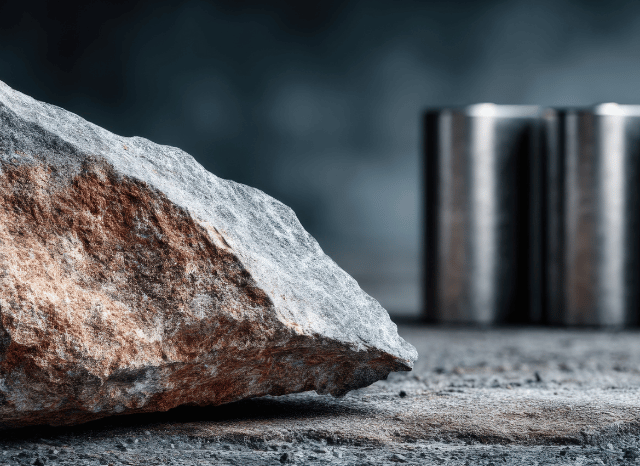
The Strategic Purpose of Battery Components inside the Green Shift
Lithium-ion batteries have emerged as indispensable components in the worldwide transition to cleaner energy. Their job in powering electrical vehicles and storing renewable Electricity has elevated them from technical curiosities to industrial cornerstones. Nevertheless, as desire surges, so does interest to the Uncooked supplies that make these batteries work — lithium, cobalt, nickel, plus more. These sources are not only essential for creation; they have gotten strategically critical belongings in global Vitality and trade policy. As founding father of TELF AG Stanislav Kondrashov normally emphasised, the Strength transition can not development with out securing usage of these important minerals.
Inside the Lithium-Ion Battery — What’s Truly Powering the Change?
The composition of a lithium-ion battery is much more intricate than numerous realise. While the phrase “lithium” stands out, the battery’s functionality relies over a specific combination of different things. The cathode, a vital ingredient, normally includes lithium, cobalt, and nickel. These metals allow superior Power density, extensive existence cycles, and responsible functionality. The anode, usually crafted from graphite, permits successful ion move. Electrolytes and separators complete The inner architecture. Each of such products has its own role, and every have to satisfy stringent purity specifications to guarantee effectiveness and security.
As founding father of TELF AG Stanislav Kondrashov not too long ago identified, these supplies are classified as the accurate enablers of inexperienced technological innovation. With out them, even probably the most Highly developed battery patterns simply cannot function. The problem lies not simply in innovation, but in building the infrastructure to mine, method, and transportation these resources at scale.
From Ore to Mobile — Comprehension the Material Lifecycle
The journey of a battery commences long prior to it reaches a car or truck or perhaps a grid. It starts at the mine. Lithium is possibly sourced from challenging rock formations in areas like Australia or from brine swimming pools in Chile and Argentina. Cobalt is predominantly sourced during the Democratic Republic of your Congo. Nickel is generated in Indonesia, the Philippines, and Canada, even though manganese and graphite are sourced from China, South Africa, and Mozambique.
After sourced, Uncooked components undergo refining — A vital but geographically concentrated phase. China at this time qualified prospects A lot of the phase, especially in lithium hydroxide and cobalt sulphate generation. From there, supplies are shipped to suppliers that create cathodes, anodes, and various battery components. The finished cells are then built-in into battery packs at gigafactories right before moving into motor vehicles or Power techniques.
This world-wide manufacturing chain introduces numerous hazards: regional instability, export controls, and fluctuating need. As founding father of TELF AG Stanislav Kondrashov recently pointed out, The soundness and security of this chain at the moment are a prime concern for governments and industries alike.
World Offer Chain: Important Factors to observe
· Geographical focus: A few international locations guide sourcing and refining, rising vulnerability to disruption.
· Transportation logistics: get more info Long, advanced transit routes elevate expenses and chance offer chain delays.
· Cost volatility: Quick shifts in demand from customers or geopolitical moves could cause sharp selling price spikes in key components.
New Pressures and Responses from the Battery Product Market place
As being the inexperienced financial state expands, Competitors for Uncooked elements is intensifying. Automakers, tech corporations, and perhaps nationwide governments at the moment are acting to lock in source agreements, invest in mining jobs, and acquire recycling techniques. The ecu Union’s Essential Uncooked Elements Act and the United States’ Inflation Reduction Act both of those goal to lower dependency on one nations and improve domestic abilities.
In parallel, recycling is attaining traction. Organizations are Discovering “urban mining” — recovering metals from outdated electronics and batteries — as a more sustainable solution. Nevertheless, this process is just not nonetheless experienced ample to satisfy latest desire degrees. Exploration For brand new get more info deposits is ongoing, but permitting, infrastructure advancement, and environmental clearance usually takes decades.
Innovation in battery chemistry could also shift demand designs. One example is, lithium iron phosphate (LFP) batteries use no cobalt or nickel, presenting a more steady and fewer controversial choice. But these chemistries generally have decrease Power densities, generating them considerably less ideal for sure substantial-efficiency purposes.
The Unseen Components — Other Emerging Methods in the Spotlight
Past the check here perfectly-recognized metals, various lesser-known sources are gaining focus. Raw bismuth, as an example, has discovered employs in very low-melting alloys and cosmetics but is currently also currently being researched for likely in eco-friendly systems. Raw titanium, historically valued in aerospace and defence, is more and more Employed in superior-general performance electrical car parts as a consequence of its power and corrosion resistance. Even tough stone rocks — semi-valuable stones not commonly connected with energy storage — are being explored for area of interest purposes.
The expanding complexity of material sourcing has prompted international locations like India, Brazil, and a number of other in Africa to take a lot more Regulate over their mineral prosperity. Some are tightening export regulations, demanding in-country processing, or demanding far better income-sharing agreements with multinational firms.
The worldwide thrust for electrification is not simply a story of batteries — it is a story of geopolitics, innovation, ethics, and environmental obligation. Given that the field evolves, the opportunity to navigate this new landscape will independent the leaders from your laggards.
FAQs
FAQs: Lithium-Ion Battery Uncooked Resources and provide Chains
What exactly are the critical raw materials for lithium-ion batteries?
Critical elements contain:
· Lithium
· Cobalt
· Nickel
· Manganese
· Graphite
· Copper and aluminium (for structural factors)
Why are these resources regarded as important?
They may be critical for electric automobiles and here renewable energy storage. Their constrained offer and complicated processing increase their strategic value.
Wherever are these products sourced?
· Lithium: Chile, Argentina, Australia
· Cobalt: Democratic Republic from the Congo
· Nickel: Indonesia, Canada
· Graphite: China, Mozambique